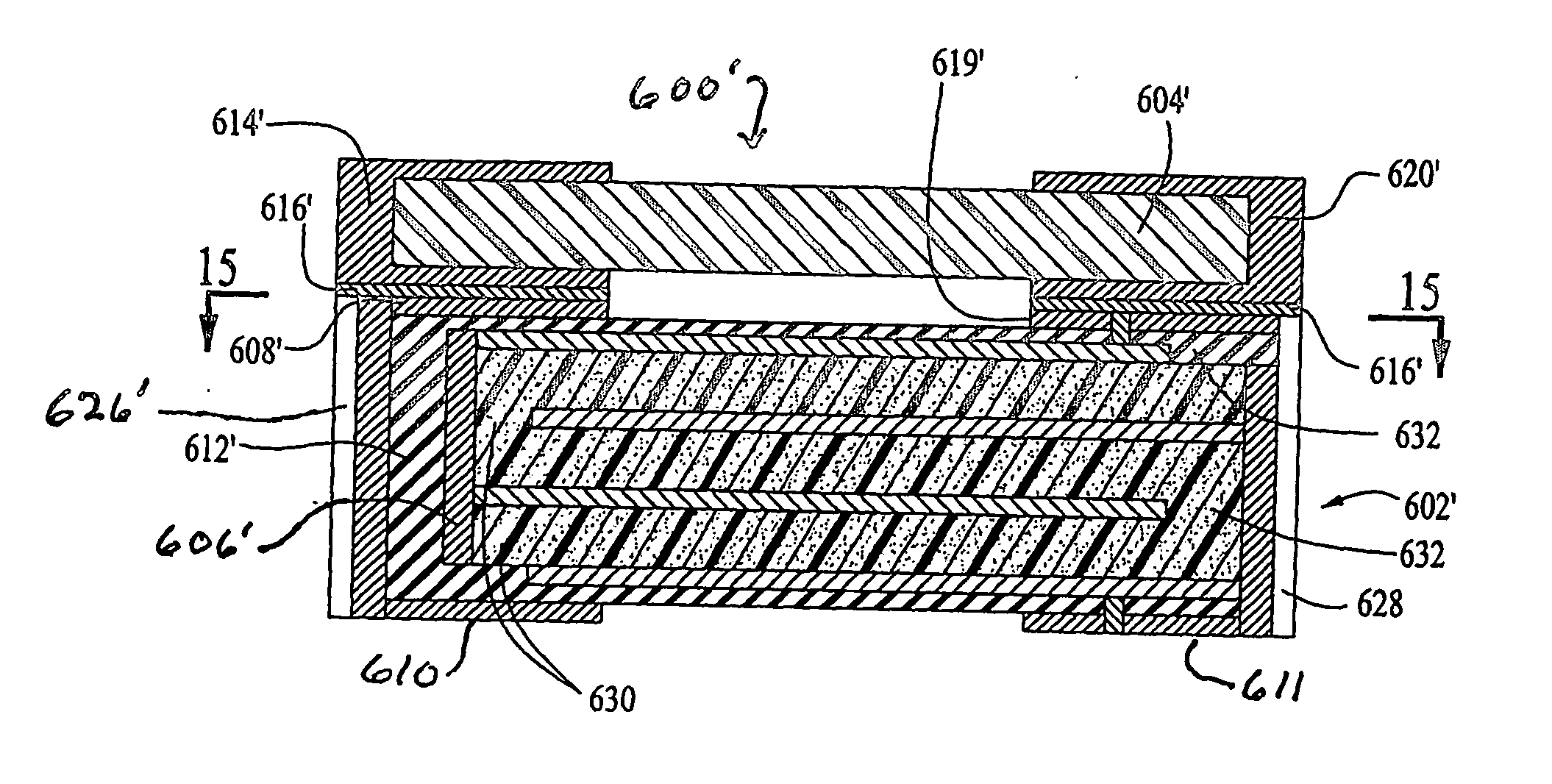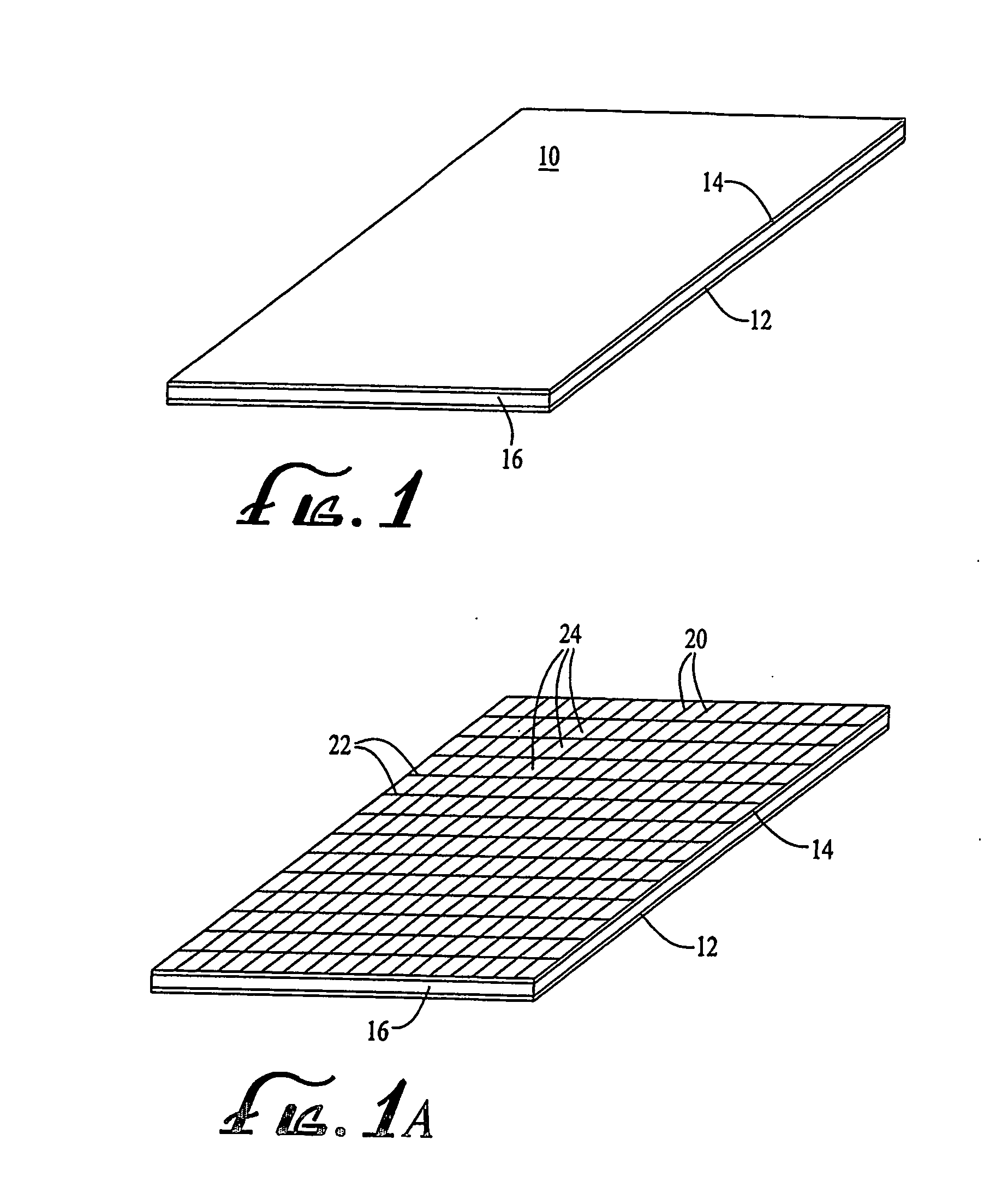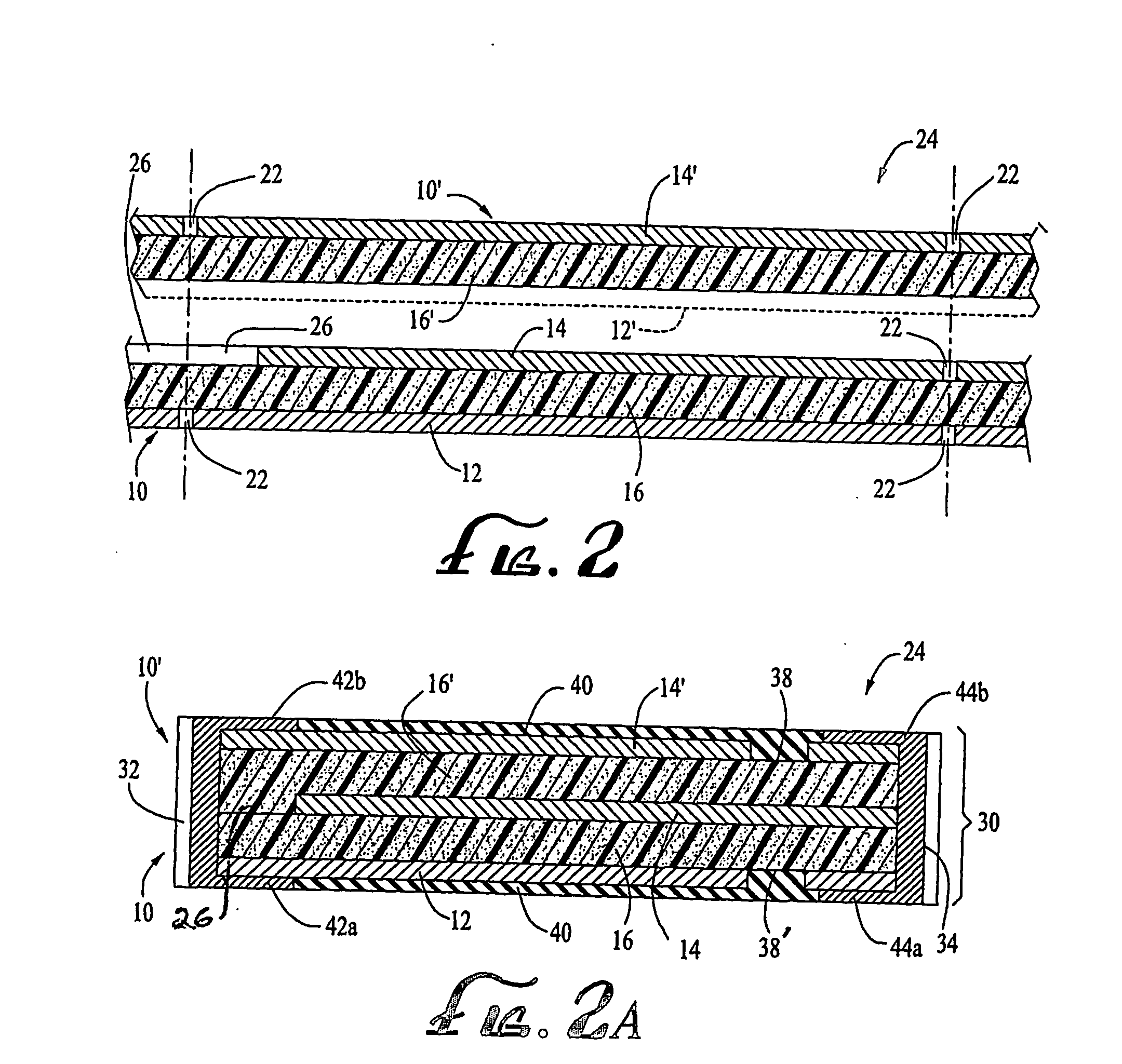Multi-layer polymeric electronic device and method of manufacturing same
a polymeric electronic device and polymer technology, applied in the direction of electrical apparatus construction details, fixed capacitor details, positive temperature coefficient thermistors, etc., can solve the problem of reducing manufacturing costs and achieve the effect of high space-saving
- Summary
- Abstract
- Description
- Claims
- Application Information
AI Technical Summary
Benefits of technology
Problems solved by technology
Method used
Image
Examples
Embodiment Construction
[0030] The various embodiments of the present invention are made with one or more laminated sheet structures, of the type shown in FIG. 1. As shown, a laminated sheet structure 10 comprises a layer of polymeric active material 16 laminated between a lower laminar metal layer 12 and an upper laminar metal layer 14. The polymeric layer 16 may be a conductive polymer, such as a polymeric positive temperature coefficient (PTC) resistive material, or it may be a polymeric dielectric material, or a ferromagnetic polymer. Various types of suitable polymer materials are well-known in the art. The metal layers 12, 14 are preferably made of conductive metal foil, and more preferably a nickel-plated copper foil that is nodularized (by conventional techniques) on the surface that is placed against the polymeric layer. The lamination may be performed by any suitable lamination process known in the art, an example of which is described in International Patent Publication No. WO 97 / 06660, the disc...
PUM
| Property | Measurement | Unit |
|---|---|---|
| non-metallic | aaaaa | aaaaa |
| non-metallic | aaaaa | aaaaa |
| distance | aaaaa | aaaaa |
Abstract
Description
Claims
Application Information
 Login to View More
Login to View More - R&D
- Intellectual Property
- Life Sciences
- Materials
- Tech Scout
- Unparalleled Data Quality
- Higher Quality Content
- 60% Fewer Hallucinations
Browse by: Latest US Patents, China's latest patents, Technical Efficacy Thesaurus, Application Domain, Technology Topic, Popular Technical Reports.
© 2025 PatSnap. All rights reserved.Legal|Privacy policy|Modern Slavery Act Transparency Statement|Sitemap|About US| Contact US: help@patsnap.com



